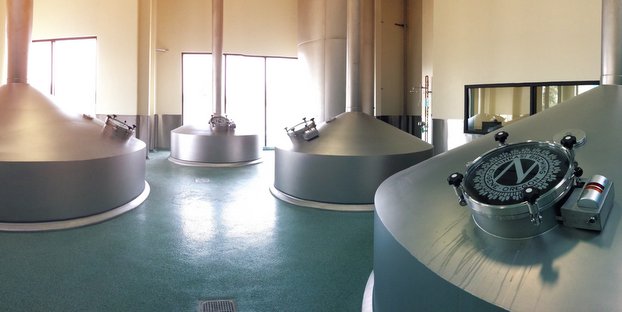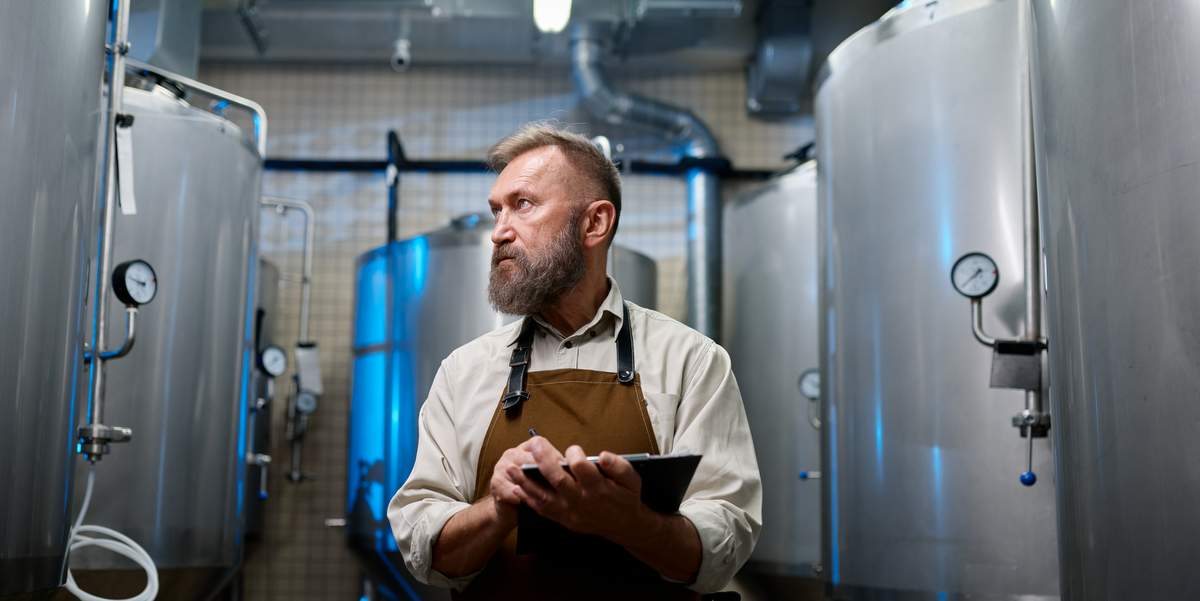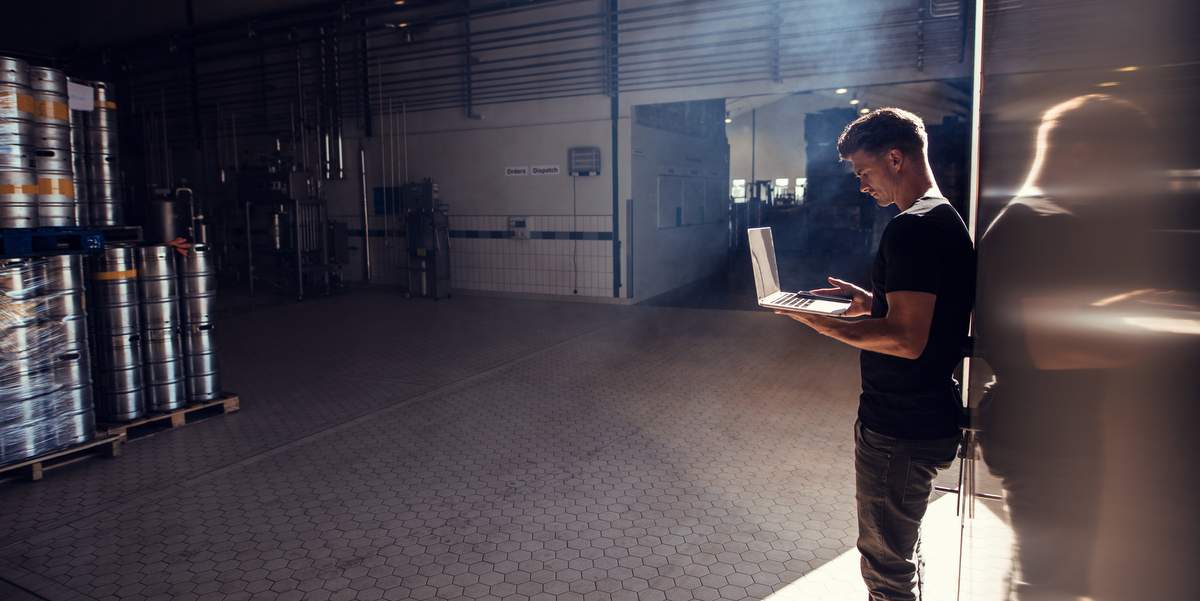
When I think of awesome equipment, I think of Batman. The guy’s only “super powers” are his awesome arsenal of badass batarangs, bathooks, batmobiles — you get the picture. He’s an effective crime fighter because has the best tools a man can buy. The same should go for your brewery, but instead of Penguin and Joker, you’re fighting quality control issues and brewing process inefficiencies. With the number of craft breweries topping 4,000, the first time since the 1800s, competition is fierce. Dive into this digest of our best equipment-focused stories from the year and chart your course to brewing improvement.
Setting up a craft brewery quality assurance program
The fight for quality beer marches on. We reached out to a couple established craft breweries to hear about the composition of their quality assurance (QA) programs. Maybe there is a task or two you’ve been overlooking in your own operation. Located in Texas, Real Ale Brewing is in its 19th year and produces around 65,000 to 70,000 barrels (bbls) per year, with all of its distribution contained inside the state of Texas. Thomas Erwin is the brewery’s lab specialist. When Erwin says they perform a “full micro” on all batches, he is looking for anaerobic and aerobic plate counts, sacchromyces wild yeast plate counts and non-sacchromyces wild yeast plate counts. These tests can really save the day.
Quality assurance basics: ATP monitoring, testing
Early in 2014 we declared quality assurance the issue of the year and posted a bunch of stuff on the topic. But now it is 2015, so time to move on to another issue, right? Wrong! At every station along your line, in every nook and canning, there is a potential disruptor to quality. Literally, the very environment we live in is an enemy of quality. Every organism on earth is sown with the seeds of your beer’s destruction. Specifically, in that last diatribe, we are talking about adenosine triphosphate (ATP). This fella lives in all living cells as a universal unit of energy. ATP is the key to all of the metabolic processes under the sun, such as photosynthesis or muscle contraction or (ahem) fermentation in yeast. This integral building block of life on earth is something to behold, for sure, but as a brewer, it must be sniffed out and eradicated, as its presence is an indication of insufficient or improper cleaning. Nothing personal, ATP. We all still appreciate these muscle contractions.
The story of Avery Brewing’s quality assurance ATP testing
Bursting at its stainless steel seams, Avery Brewing Co. in Boulder, Colo., anxiously awaited its transition into a new state-of-the-art facility in North Boulder when we sat down to chat in early 2015. The brewery, which got its start in early ’90s as the fortunate result of Adam Avery’s home brewing experimentation, is now cranking out 50,000 barrels a year, running brewing and bottling operations 24 hours a day at full production capacity. Quality Manager Rob Christiansen took a rare free moment to share some of the trials and tribulations of maintaining sanitation quality and keeping hectic brewery operations spic and span.
Discussing centrifuges with Flying Fish Brewing (and aging in tequila barrels)
It’s bigger, faster and, would you believe, tidier? Hey, it can even babysit itself. But wait, there’s still more for Flying Fish Brewing Co. to like about the German-made centrifuge it upgraded to in February to spin yeast out of its beer before packaging. The brewery’s purchase of the GEA Westfalia HB1 is the answer to steady capacity increases that were beginning to outrun a smaller centrifuge the brewery put into service four years ago. The upgrade is also boosting production yields of New Jersey’s largest craft beer maker. Centrifuges do their thing — removing yeast and other solids (like hops) — by whirling the beer around at high speeds, causing those denser solids to be spun out of the liquid through gravitational force. Brewers like centrifuges for removing yeast because the process doesn’t strip away desired hop and malt flavors like pushing beer through filter media can.
Why filtration is vital in the brewing process
The quality of any brewed beverage depends on how well it has been filtered, and brewed beer is no exception. In fact, compared with coffee, tea or other cold beverages, beer is even more subject to contamination because of how it is made and the mere length of time it takes to get from start to finish. With so many stages in the brewing process — especially brewing on a large scale — having the right filtration system in place is crucial. The complex brewing process presents countless opportunities for debris and contaminants (sometimes intentionally, like yeast, and other times not, like bacteria) to find their way into a batch of beer. Whether homebrewing, operating a microbrewery, or brewing beer in bulk, high-quality filtration systems are a good investment.
How to choose the right boiler for your brewery
A boiler purchase is one of the most important investments for a craft brewery. Breweries rely on steam heating for a number of reasons — primarily for the kettle and to produce hot water for sanitization. Steam is also required to keep solutions at the right temperatures and is used in pasteurization heating for bottling. Choosing the right boiler is crucial to ensuring that you can meet production demands without wasting time or energy.
Keep it clean: Common keg cleaning questions answered
There is a popular saying among brewers: If you love washing dishes, you’ll love brewing beer. That’s because cleaning and sanitation are critical to brewing great beer. Even the slightest contaminant can ruin a perfect batch. So, how do you prevent the spoilage of some stellar suds? Here are answers to commonly asked questions about keg cleaning and sanitation.
Eco-friendly brewing tips from top craft brewing professionals
Being a craft brewery means embracing the big task of environmental stewardship. In fact, craft breweries around the nation are leading the charge for eco-friendly business practices, from water conservation and clean energy generation to recycling and reuse programs. To honor and educate the industry, we’ve called on some of those green-focused craft breweries (as well as some of our manufacturing friends) to share their secrets for running an eco-friendly brewery. We thank all of them for their support (especially the Craft Brew Alliance, which sent us three entries!). Because without a happy and healthy Mother Nature, none of us would get to enjoy good beer for very long.
Coating systems for craft breweries: What’s on your brewery floor matters
As your craft brewery’s revenue increases and cash flow hits a steady stream, those farfetched dreams of brewery expansion or adding a location quickly become a reality. Here at Craft Brewing Business (CBB), we’ve covered everything your next brewery would need–from cylindroconical fermenters to automated packaging systems. Yet there is one important aspect of a brewery that is easily overlooked, even though you’re standing on top of it: Your brewery’s floor coating. Today’s coatings offer everything from heat and chemical to impact and thermal shock resistance. In short, floor coatings have you covered when it comes to safety and brewery productivity, but how do you go about selecting the best coating for your brewery? Read on to find out.
Avondale Brewing banks on polypropylene-random pipe for transferring signature suds (and glycol)
Within most native Southerners grows an appreciation of the past, a sense of community and an aptitude for storytelling. In March 2010, brothers Coby and Hunter Lake founded their brewery, Avondale Brewing Co., in Birmingham, Ala., on these very same principles. To that end, the brothers chose for their 10,000-square feet brewery an establishment built in 1895 mostly because of its history. As Avondale’s creations became more popular, Coby and Hunter Lake began packaging their beer in kegs, cans and bottles for sale in the Birmingham area. Manufacturing about 480 barrels (bbls) per month, the original building wasn’t large enough for both brewing and packaging 10 to 12 varieties of suds. After deciding to use a second, smaller building on the premises to package the beer, the brothers had to find a way of transferring it from one end of the property to the other.
Great stories stand the test of time. If you’re hungry for even more excellent brewing business content, check out our Best Of archives for 2014 and 2013.





Best of CBB 2015: Outfitting your brewery with the best equipment https://t.co/c4SzkSZgUa via @craftbrewingbiz
Serge Lubomudrov liked this on Facebook.
#CraftBeer #CraftBrewing #Beer #BeerBiz Best of CBB 2015: Outfitting your brewery with the best equipment https://t.co/jDH0mr8XYr
Oleg Bootlegger liked this on Facebook.
Jerry Elliott liked this on Facebook.
Jeff Platt liked this on Facebook.